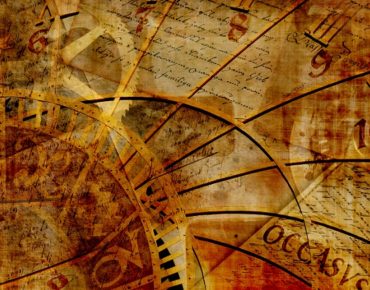Archaeology and AI Unlock the Secrets of Our Ancient History

The study of archaeology is like a key – it unlocks the past through its search for and analysis of ancient items that have survived over the ages. Historically, it has been a discipline that takes time and patience to reveal its secrets. Recent technological revolutions have advanced knowledge in the field. With the help of today’s intelligent computing, researchers are now more easily able to find out more about our world from critically examining the artifacts of the past.
Radiocarbon or carbon-14 dating emerged in the 1940s, a game changer in the science of determining the age fossils, rocks and cultural relics. By utilizing the properties of radiocarbon, any object containing organic material can be accurately dated, allowing important beginnings and endings in prehistory to be dated, such as the end of the ice age or the beginning of the Stone Age.a
Another transformational discovery that furthered the study of archaeology is more recent. DNA sequencing has opened the door to archaeogenetics, or biomolecular archaeology, the study of ancient DNA, recovered primarily from fossilized bones and teeth.
We’ve made leaps in knowing what it was like during ancient times with the help of these technologies. Carbon dating and DNA sequencing have enabled researchers to answer questions with relative certainty about the evolution of our planet, specific events, and how we evolved into the beings we are today.
Nevertheless, these technologies need to be understood and properly implemented to provide meaningful data from which to hypothesize. Simply finding DNA in some prehistoric remains is only the beginning. In order to analyze for genetic variation, that DNA must be sequenced and properly placed to create an entire genome. The process is massive; a data intensive procedure that benefits from high-performance computing for calculations and artificial intelligence for assistance in logical deduction.
AI brings the past to the present
The hurdles to be overcome in biomolecular archaeology are numerous, but one of the first a researcher will encounter is that when working with ancient biological remains, the amount of usable DNA in a sample will likely be extremely small. Once the samples have been identified, the next challenge is compiling enough that are viable to create a genome worthy of analysis. The numbers are staggering to consider. Three billion (with a B) base pairs of DNA are contained in the human genome, and when sequenced, they are seen as thousands of DNA fragments. You can imagine the struggle researchers have in bringing together DNA in a way that makes sense and reveals a completed human genome.
In the past, genome assembly took place on a central processing unit, performing the basic math and logic needed a process that would take weeks to complete. With today’s computing solutions, archaeologists spend much less time processing these and instead concentrate their efforts toward analyzing it to and unlock the mysteries their research is meant to discover.
One example is the archaeological DNA laboratory, which provided scientists working on the Chinese Ancient Human Genetic Evolution Research Project with Field Programmable Gate Array (FGPA) solutions to assist archaeologists in completing an entire genome analysis in less than 10 hours and an exome analysis in under one. When these times are compared to those older CPU-based solutions’ results, the processing speed of the gene data was 39 times faster. It’s easy to extrapolate how this processing speed has positive implications for research. Today, archeologists can accomplish the task of human gene comparison and assembly in 1/40 of the previous time needed.
Genes: windows into where we came from
Once genome alignment and assembly are complete, researchers are then ready for genetic evolution analysis. The information encoded in DNA is replicated and passed on to the next generation. Any mutations are carried along in the same manner. By examining these mutations and how they persist over generations, scientists can use deductive reasoning to find unique instances where genes evolved and estimate from which period they came from. Mapping the evolution of the entire human genome across time and humanity is no easy task. Bring in the capabilities of artificial intelligence and high-performance computing for archaeology and those answers are suddenly closer than ever before.
As the Chinese Ancient Human Genetic Evolution Research Project progresses, we continue to innovate and positively affect scientific outcomes with artificial intelligence. We encourage researchers to start out by first using FGPA to accelerate their application, then apply artificial intelligence computing to quickly identify the genes and mutations earmarked for further study. Computing solutions and advanced technology provide tremendous benefit in the search for answers to our past, creating a computational laboratory from which we can research prehistoric times.
What’s so exciting is that two separate fields, science and technology, have begun to blur their boundaries and provide cross-disciplinary benefit as genetic research continues to build momentum. Enabling the scientific community with computing power and expertise will support and inspire current and future scientists in their search for answers to today’s questions from the relics of the past.
Liu Jun is Vice President of Inspur Information, a leading global provider of AI servers. Liu has over 20-years’ experience in AI and HPC and spearheads product development, application and services at Inspur's Artificial Intelligence and High-Performance Computing division.












